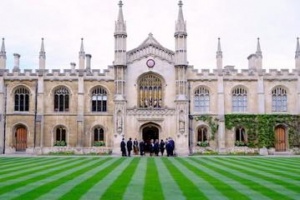How does studying in Spain differ from studying in Cambridge?
The methods used by educational institutions in different countries can differ significantly. Researchers from the Spanish newspaper El Pais decided to find out what the differences are between studying in Spain and Cambridge, based on teaching methods and assessment of knowledge.
One important difference is that at Cambridge, exams are anonymous. Students’ papers are numbered rather than named, and are marked by a committee of examiners rather than by the professors who taught the course. Yet the pass rate is very high.
According to the Times Higher Education ranking, Cambridge is ranked fourth among universities worldwide and is considered to have the most innovative student ecosystem. 99% of Cambridge students successfully complete their degree, and 91% of graduates find work within six months of graduating.
Spanish lecturers who have worked in Cambridge have given their opinions on how the university system in Spain differs from that in the UK. One of the lecturers interviewed, who has over 12 years of experience in Cambridge, believes that one of the main problems in Spanish universities is rote learning and lack of creativity. Lecturers are expected to use traditional sources without deviating too much from established methods. Dissertations written by PhD candidates in Spain are often too long – around 500 pages, of which the first hundred are devoted to summarising the already published literature on the topic. At Cambridge, the dissertation is limited to 200 pages and the candidate is expected to create something new in their field of study.
Another Spanish teacher who came to Cambridge 20 years ago notes that in Spain, university education is still based on the lecture system. Students have few opportunities to interact with teachers and experts, asking questions. The learning process is often impersonal, and exams are based on memorization and accurate recall of material. In Cambridge, students develop critical thinking and prepare for professional work. This model requires a lot of effort from teachers.
Studying at Cambridge involves individual meetings between the teacher and the student, where the student’s progress and performance are discussed. This helps to quickly identify weaknesses and areas where additional work is needed. These meetings take place every week and allow for effective study. Instructors can often predict what grade a student will receive in an exam. The aim of studying at Cambridge is to develop the student’s ability to think and learn independently, rather than to test the assimilation of the material.
As Spanish teachers who have worked in Cambridge note, the Spanish model of education is horizontal, meaning that the quality of education in different universities in the country is almost the same. While the British model is vertical, and the quality of education in different universities varies significantly.
At Cambridge, preparation of exam questions begins several months before the exam. The materials prepared by teachers are checked by a special committee to ensure that they meet the requirements of the program. In Spain, the workload of teachers is so great that they often have to do research or scientific work in their free time. At Cambridge, increasing the number of instructors has helped to avoid this problem and make teaching more personalized for each student.
